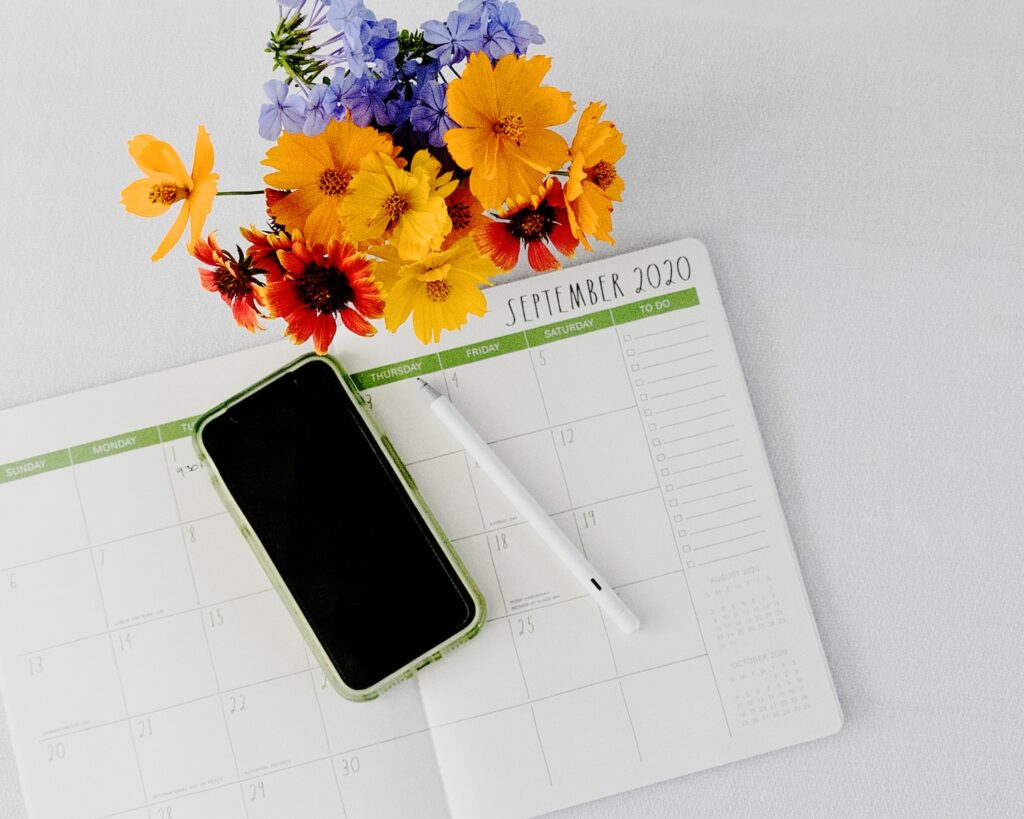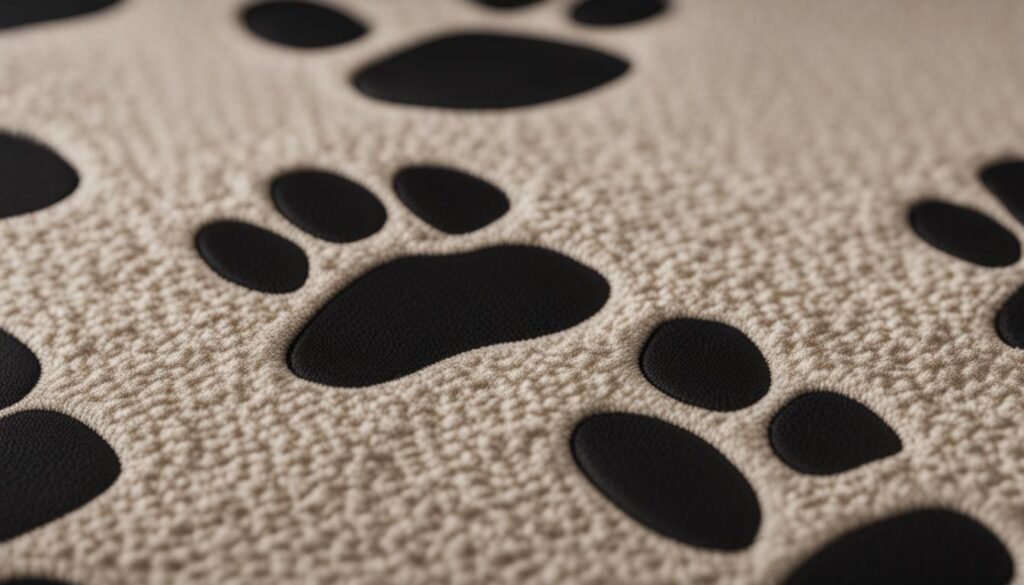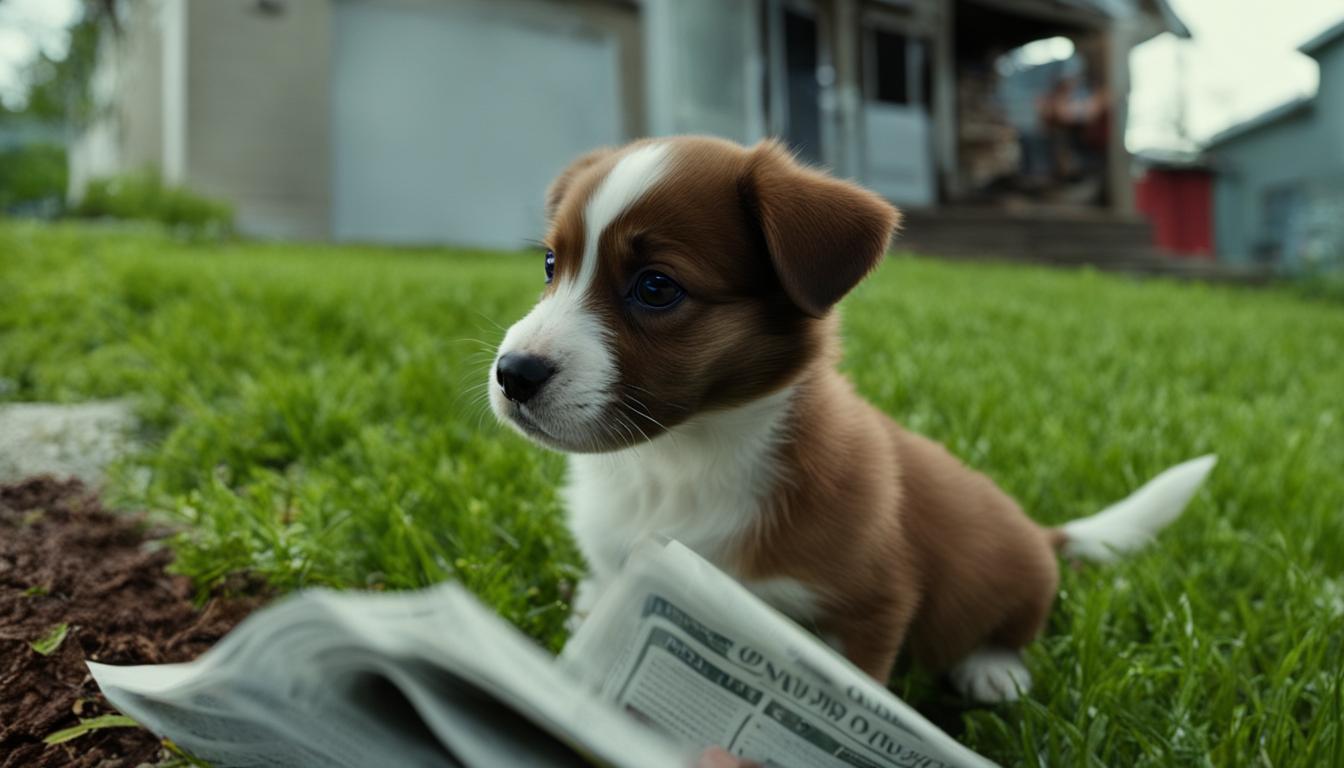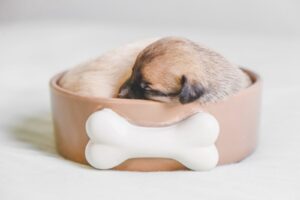Potty training a puppy can be a challenging task, but with the right approach and consistency, it is entirely manageable. By breaking down the process into smaller steps and establishing a routine, you can successfully teach your puppy to use the designated potty area. The key is to approach potty training with a positive mindset, understanding that it is about giving your puppy the opportunity to go outside rather than punishing them for accidents inside the house.
One helpful tool for potty training is a crate, which provides a controlled space for your puppy to learn to “hold it” and prevents accidents in the house. Developing a potty training schedule and consistently taking your puppy to the same spot each time will establish good habits. Remember to praise your puppy and offer rewards when they go outside to reinforce positive behavior.
While accidents may happen, it’s essential to handle them calmly and clean up properly to prevent future incidents. With patience and consistency, you can successfully potty train your puppy and establish a loving bond based on trust and understanding.
- Adopting the Right Mindset for Potty Training
- Using a Crate for Potty Training
- Developing a Potty Training Schedule
- Taking Your Puppy Outside to Go Potty
- Maintaining Consistency and Overcoming Challenges
- Dealing with Accidents the Right Way
- Tips for Indoor Dogs or Leaving Your Puppy Alone
- Puppy Pads and Paper Training
- Troubleshooting Common Potty Training Issues
- Conclusion
- FAQ
- Source Links
Key Takeaways:
- Approach potty training with a positive mindset and understand it is about giving your puppy the opportunity to go outside.
- Use a crate as a helpful tool for potty training to provide a controlled space for your puppy to learn to “hold it.”
- Develop a consistent potty training schedule and take your puppy to the same designated spot each time.
- Praise your puppy and offer rewards when they go outside to reinforce positive behavior.
- Handle accidents calmly and clean up properly to prevent future incidents.
Adopting the Right Mindset for Potty Training
Potty training your puppy requires more than just knowing the right techniques; it also requires adopting the right mindset. By understanding that potty training is not about punishing your puppy for going inside, but about providing them the opportunity to go outside, you can set the foundation for effective training. Consistency, time management, and rewarding desired behavior are key factors in successful potty training.
When approaching potty training, it’s important to remember that the success of the training relies on your consistency as an owner rather than solely on your puppy’s behavior. By maintaining a positive and patient mindset, you can create a supportive environment for your puppy to learn and master potty training.
Adopting the Right Mindset for Potty Training
It’s crucial to emphasize that accidents may happen during the training process, but it’s important to handle them calmly and without punishment. Instead, focus on frequent potty breaks, sticking to a schedule, and providing positive reinforcement when your puppy goes outside. With the right mindset and consistent training, your puppy will develop good potty habits and build a strong bond with you as their owner.
| Adopting the Right Mindset for Potty Training | |
|---|---|
| Key Points | – Understand that potty training is about giving your puppy the opportunity to go outside – Consistency and time management are crucial – Reward desired behavior and handle accidents calmly – Focus on the owner’s consistency rather than the puppy’s behavior |
| Benefits | – Build a supportive environment for your puppy – Establish a strong bond between you and your puppy – Foster positive habits and behaviors – Create a stress-free potty training experience |
Remember, the mindset you adopt during potty training will greatly influence its success. By focusing on positive reinforcement, consistency, and patience, you can help your puppy develop good potty habits and set them up for a lifetime of success.
Using a Crate for Potty Training
When it comes to potty training your puppy, using a crate can be an effective tool. Crate training not only helps prevent accidents inside the house but also teaches your puppy to hold their bladder and bowels. It provides them with a safe and controlled space where they can learn to associate the crate with relaxation and comfort.
To use a crate effectively for potty training, make sure to choose the right size crate for your puppy. It should be large enough for them to comfortably sit, lie down, and turn around, but not too spacious that they can create a potty spot inside.
Introduce the crate to your puppy gradually, using positive reinforcement and treats to create a positive association. Encourage them to enter the crate willingly and make it a cozy and inviting space with a comfortable bed or blanket. It’s important not to use the crate as a form of punishment, but rather as a tool for training and providing a safe den-like environment for your puppy.

Benefits of Crate Training for Potty Training
Crate training offers several benefits for potty training your puppy. Firstly, it helps establish a routine and schedule. By taking your puppy outside for potty breaks and rewarding them for eliminating in the appropriate spot, you can teach them the desired behavior and establish good habits.
The crate also aids in preventing accidents when you’re unable to supervise your puppy. When you can’t keep an eye on them, confining them to the crate or a designated area in the house helps prevent accidents and reinforces the idea of holding it until they are taken outside.
Overall, using a crate for potty training can be a valuable tool in helping your puppy learn appropriate bathroom behavior. Remember to be patient and consistent, and soon your puppy will develop good potty habits, leading to a clean and well-trained furry companion.
Developing a Potty Training Schedule
Consistency is crucial when it comes to potty training your puppy. By developing a schedule, you can establish routine and help your puppy master the house training process. A potty training schedule provides structure for both you and your puppy, making it easier to anticipate their needs and reinforce desired behavior.
When creating a potty training schedule, consider the following factors:
- Feeding times: Regular meals can help establish a predictable bathroom schedule.
- Potty breaks: Take your puppy outside every 2-3 hours or after meals, naps, and playtime.
- Crate or confinement time: Use the crate or designated confinement area when you can’t supervise your puppy.
- Playtime: Engage in active play to encourage physical activity and stimulate bowel movements.
- Sleep time: Create a comfortable and quiet sleeping area so your puppy can rest undisturbed.
By incorporating these elements into your puppy’s schedule, you can set them up for success in their potty training journey. Consistency is key, so try to stick to the schedule as closely as possible. Keep in mind that puppies have small bladders and may need more frequent potty breaks, especially during their early stages of training.

Potty Training Schedule Example
| Time | Activity |
|---|---|
| 7:00 am | Take puppy outside for potty break |
| 7:30 am | Feed puppy breakfast |
| 8:00 am | Take puppy outside for potty break |
| 9:00 am | Confinement time in crate |
| 10:00 am | Playtime and training |
| 11:00 am | Take puppy outside for potty break |
| 12:00 pm | Feed puppy lunch |
| 1:00 pm | Take puppy outside for potty break |
| 2:00 pm | Confinement time in crate |
| 3:00 pm | Playtime and training |
| 4:00 pm | Take puppy outside for potty break |
| 5:00 pm | Take puppy outside for potty break |
| 6:00 pm | Feed puppy dinner |
| 7:00 pm | Take puppy outside for potty break |
| 8:00 pm | Confinement time in crate |
| 9:00 pm | Bedtime |
Remember, every puppy is unique, and their potty training needs may vary. It’s important to observe your puppy’s behavior, adjust the schedule as needed, and be patient throughout the process. With consistency and a well-developed potty training schedule, your puppy will soon master the art of going outside!
Taking Your Puppy Outside to Go Potty
One of the most important aspects of potty training your puppy is taking them outside to go potty. This helps them understand that going outside is the appropriate place to relieve themselves. When starting the potty training process, it’s recommended to choose a specific spot in your yard for this purpose. This consistent location will help your puppy associate that spot with going potty.
To ensure your puppy stays focused during potty breaks, it’s a good idea to keep them on a leash. This helps prevent them from getting distracted and wandering off. When you take your puppy outside, give them about 10-15 minutes to sniff around and do their business. Avoid excessive talking or excitement during this time to keep them focused on the task at hand.
Introducing a verbal cue, such as “go potty,” can also help reinforce desired behavior. Use this cue consistently every time you take your puppy outside. When your puppy successfully goes potty outside, be sure to praise them and offer a reward as positive reinforcement. This helps them understand that going potty outside is a good thing.
| Tip: | Use a consistent verbal cue, such as “go potty,” to help your puppy associate this phrase with the act of relieving themselves outside. |
|---|
Remember, accidents may still happen during the potty training process. If your puppy starts to go potty inside, calmly interrupt them and quickly take them outside to the designated spot. Avoid scolding or punishing your puppy for accidents, as this can create fear or confusion. Instead, focus on reinforcing positive behavior and providing consistent guidance.
In summary, taking your puppy outside to go potty is an essential part of the potty training process. Choose a specific spot in your yard, use a verbal cue, and offer praise and rewards for successful potty breaks. Stay consistent and patient throughout the training process, and remember that accidents are a normal part of the learning experience.
Maintaining Consistency and Overcoming Challenges
Potty training a puppy requires consistency and perseverance. By following a structured routine and providing positive reinforcement, you can help your puppy develop good potty habits. However, it’s important to remember that challenges may arise along the way. Let’s explore some common challenges in potty training and how to overcome them.
Challenges in Potty Training
One of the biggest challenges in potty training is accidents. Even with a consistent schedule, accidents may happen occasionally. It’s crucial to handle these accidents calmly and avoid punishing your puppy. Instead, focus on reinforcing positive behavior and redirecting your puppy to the appropriate potty spot.
Another challenge is maintaining consistency. Potty training requires a dedicated effort to stick to the established routine. Life can sometimes get in the way, making it challenging to always provide timely potty breaks. Overcoming this challenge requires effective time management and accountability. Setting reminders and enlisting the help of family members or a dog sitter can help ensure consistency.
Overcoming Potty Training Challenges
To overcome challenges in potty training, it’s essential to reinforce consistency. Stick to the established schedule as much as possible, and ensure that everyone involved in your puppy’s care is on the same page. Consistency helps your puppy understand the expectations and develop good habits.
Additionally, be prepared to overcompensate in case of accidents. If your puppy has an accident, increase the frequency of potty breaks to prevent further incidents. Offer praise and rewards when your puppy goes in the appropriate spot, reinforcing the desired behavior. Consistency and positive reinforcement are key strategies to overcome potty training challenges.
Summary
Potty training a puppy can be a rewarding but challenging process. Maintaining consistency in your training routine and overcoming challenges is crucial for success. Remember to handle accidents calmly, reinforce positive behavior, and stick to the established schedule. By doing so, you’ll help your puppy develop good potty habits and establish a strong bond with you as their owner.

Dealing with Accidents the Right Way
Accidents are a normal part of the potty training process, and it’s important to handle them appropriately. When caught in the act, it’s recommended to clap or say “NO” loudly and sternly to deter the puppy from continuing the accident. However, if you find an accident after the fact, it’s best to clean it up without fuss. Punishing the puppy or rubbing their nose in the mess is not recommended as it can create fear and anxiety.
To clean up accidents in potty training, it’s essential to use an enzymatic cleaner specifically designed for pet messes. These cleaners break down the enzymes in urine and feces, effectively eliminating the odor and preventing the puppy from returning to the same spot. Avoid using ammonia-based cleaners as they can resemble the scent of urine and encourage the puppy to eliminate in that area again.
“Accidents happen during the potty training process, and it’s important not to punish the puppy. Instead, focus on consistency and positive reinforcement to help them learn.”
When cleaning up accidents, it’s important to thoroughly soak the affected area with the enzymatic cleaner and let it sit for the recommended time. Afterward, use a clean cloth or paper towels to blot up the moisture. Avoid rubbing or scrubbing the area, as this can spread the mess and embed it deeper into the fibers. Repeat the cleaning process if necessary and allow the area to air dry.
| Accident Cleaning Tips: |
|---|
| Use an enzymatic cleaner specifically designed for pet messes. |
| Thoroughly soak the affected area with the cleaner and let it sit. |
| Blot up the moisture with a clean cloth or paper towels. Avoid rubbing or scrubbing. |
| Repeat the cleaning process if necessary and allow the area to air dry. |
Remember, accidents are a part of the learning process and should be handled with patience and understanding. By cleaning up accidents promptly and using positive reinforcement, you can help your puppy develop good potty habits and progress in their training.
Tips for Indoor Dogs or Leaving Your Puppy Alone
If you have an indoor dog or need to leave your puppy alone for extended periods, it’s important to establish boundaries and provide appropriate confinement to prevent accidents. Here are some tips to help you with indoor puppy potty training and keeping your puppy safe while you’re away:
1. Use baby gates to limit access
Installing baby gates can be a great way to restrict your puppy’s access to certain areas of the house. This can be especially helpful when you’re unable to supervise your puppy closely. By using baby gates strategically, you can create a safe environment for your puppy while also minimizing the chances of accidents occurring in areas where you don’t want them.
2. Set up a designated potty area indoors
If you’re unable to take your puppy outside as frequently as needed, consider setting up a designated potty area indoors. Use puppy pads or a specific area with absorbent material, like newspaper, to encourage your puppy to eliminate in that spot. Be consistent in directing your puppy to the designated area and rewarding them for using it. However, it’s important to note that indoor potty training should be a temporary solution, with the ultimate goal of transitioning your puppy to go outside.
3. Provide mental and physical stimulation
Leaving your puppy alone can lead to boredom, which can contribute to accidents and destructive behavior. To prevent this, make sure to provide your puppy with plenty of mental and physical stimulation. Leave them with puzzle toys or treat-dispensing toys to keep them entertained. Consider providing interactive games or training sessions before leaving to tire them out both mentally and physically.
Remember, while these tips can help with indoor puppy potty training and keeping your puppy safe when left alone, it’s essential to gradually transition your puppy to outdoor potty training as soon as possible. With consistency, patience, and proper guidance, your puppy will learn to understand the desired potty behavior and develop good habits.
Puppy Pads and Paper Training
Puppy pads and paper training are alternative methods for potty training your puppy. These techniques can be useful in situations where it may be challenging to take your puppy outside frequently or if you have an indoor dog. Both methods require consistency and proper transitioning to outdoor training in the long run.
Puppy pads are absorbent pads that are placed on the floor for your puppy to eliminate on. They are often scented with attractants to encourage your puppy to use them. Puppy pads can be especially helpful if you live in an apartment or have limited access to outdoor spaces. It’s important to place the pads in a designated area and gradually reduce the number of pads as your puppy becomes more comfortable with going outside.
Another option is paper training, which involves teaching your puppy to eliminate on a specific surface, such as newspaper or a designated area with absorbent material. Start by placing the paper in a specific spot and gradually move it closer to the door or the desired outdoor potty area. This method can be helpful in teaching your puppy to associate a specific surface with elimination.
Remember, consistency is crucial when using puppy pads or paper training. Set a routine and take your puppy outside regularly to reinforce outdoor potty habits. Gradually reduce the reliance on pads or paper as your puppy becomes more proficient in using the designated outdoor area.

Tips for Transitioning to Outdoor Training
Once your puppy is comfortable using puppy pads or the designated paper area, it’s important to start transitioning them to outdoor potty training. Here are some tips to help with the transition:
- Gradually move the puppy pads or paper closer to the door that leads to the outdoor potty area.
- When your puppy consistently uses the pads or paper in the desired area, start taking them outside to the same spot each time they need to eliminate.
- Use a verbal cue or command to associate with going outside to potty.
- Offer praise and rewards when your puppy successfully eliminates outside.
With consistent training and positive reinforcement, your puppy will learn to associate the outdoor potty area as the preferred place for elimination. Remember to be patient and understanding throughout the training process.
Summary
Puppy pads and paper training can be effective methods for potty training your puppy, especially in situations where outdoor access is limited. Consistency is key when using these methods, and transitioning to outdoor potty training should be done gradually. With patience, positive reinforcement, and a consistent routine, you can successfully potty train your puppy using puppy pads or paper training.
Troubleshooting Common Potty Training Issues
Potty training a puppy can sometimes come with its fair share of challenges and issues. If you’re experiencing difficulties during the potty training process, rest assured that you’re not alone. Many pet owners face common problems along the way. Understanding these issues and having the right strategies in place can help you overcome them effectively.
One common issue is regression, where a previously potty-trained puppy starts having accidents again. This can happen due to various reasons such as changes in routine, stress, or even a medical condition. To address regression, it’s important to identify the underlying cause and make necessary adjustments. Reinforce positive habits by revisiting the basics of potty training, and provide additional support and guidance to help your puppy regain their previous success.
Another problem you may encounter is fear or trauma-related accidents. If your puppy has had a negative experience associated with going outside or using certain surfaces, they may develop anxiety or fear, leading to accidents indoors. Patience, consistency, and positive reinforcement are key when addressing fear-related accidents. Gradually reintroduce positive experiences and provide reassurance to help your puppy overcome their fears.
Marking behavior, where the puppy starts to urinate or defecate to mark their territory, can also be a challenge during potty training. This behavior is more common in unneutered male puppies, but can also occur in females. To address marking behavior, it’s important to prevent access to areas where marking is a problem and to reinforce appropriate bathroom behavior outside. Consult with a professional trainer or behaviorist for tailored strategies to manage and redirect marking behavior effectively.
Common Potty Training Problems:
- Regression
- Fear or trauma-related accidents
- Marking behavior
Remember, potty training takes time and patience. Troubleshooting these common issues with a positive and consistent approach will help you and your puppy succeed. If you’re struggling to overcome these challenges, don’t hesitate to seek professional help from trainers or behaviorists who can provide you with expert guidance and tailored solutions.
Conclusion
Potty training a puppy requires patience, consistency, and a positive mindset. By breaking down the training process into manageable steps, using tools like a crate, developing a schedule, and providing proper guidance and rewards, it is possible to effectively potty train a puppy. Accidents may happen along the way, but handling them calmly and maintaining consistency will help the puppy develop good potty habits and establish a loving bond with their owner. With time and effort, potty training can be a successful and rewarding experience for both the puppy and the owner.
Remember, potty training is not about punishment but about providing the puppy with opportunities to go outside. Consistency is key, so stick to a schedule and take your puppy to the same spot each time. Use positive reinforcement, praise your puppy, and offer rewards when they go outside. If accidents occur, don’t get discouraged. Clean up properly to prevent future incidents and adjust the schedule as needed.
With the right mindset and approach, you can help your puppy master potty training and establish good habits that will last a lifetime. Be patient, consistent, and understanding, and soon you’ll enjoy the rewards of a well-trained and housebroken puppy.
FAQ
What is the right mindset for potty training a puppy?
Potty training is about providing the puppy with the opportunity to go outside, not punishing them for going inside.
How can I use a crate for potty training?
A crate provides a controlled space for the puppy to learn to “hold it” and prevents them from going inside the house.
How can I develop a potty training schedule?
Creating a schedule with consistent feeding times, potty breaks, and crate or confinement time can help establish good habits.
How do I take my puppy outside to go potty?
Start with a chosen potty spot, keep the puppy on a leash, and give them time to sniff and go. Use a verbal cue and offer rewards for desired behavior.
How can I maintain consistency in potty training?
Stick to the schedule, be a good time manager, and remember the importance of positive reinforcement and rewards.
How should I handle accidents in potty training?
Handle accidents calmly, clean up properly to prevent repeat incidents, and avoid punishment or rubbing the puppy’s nose in the mess.
What should I do for indoor dogs or when leaving my puppy alone?
Set boundaries with baby gates, provide appropriate confinement, and establish a routine with mental and physical stimulation.
Are puppy pads and paper training effective for potty training?
Yes, puppy pads and paper training can be alternative methods, but it’s important to transition to outdoor training in the long run.
What should I do if I encounter issues in potty training?
Seek professional help from trainers or behaviorists for tailored solutions and approach issues with patience and positive reinforcement.




